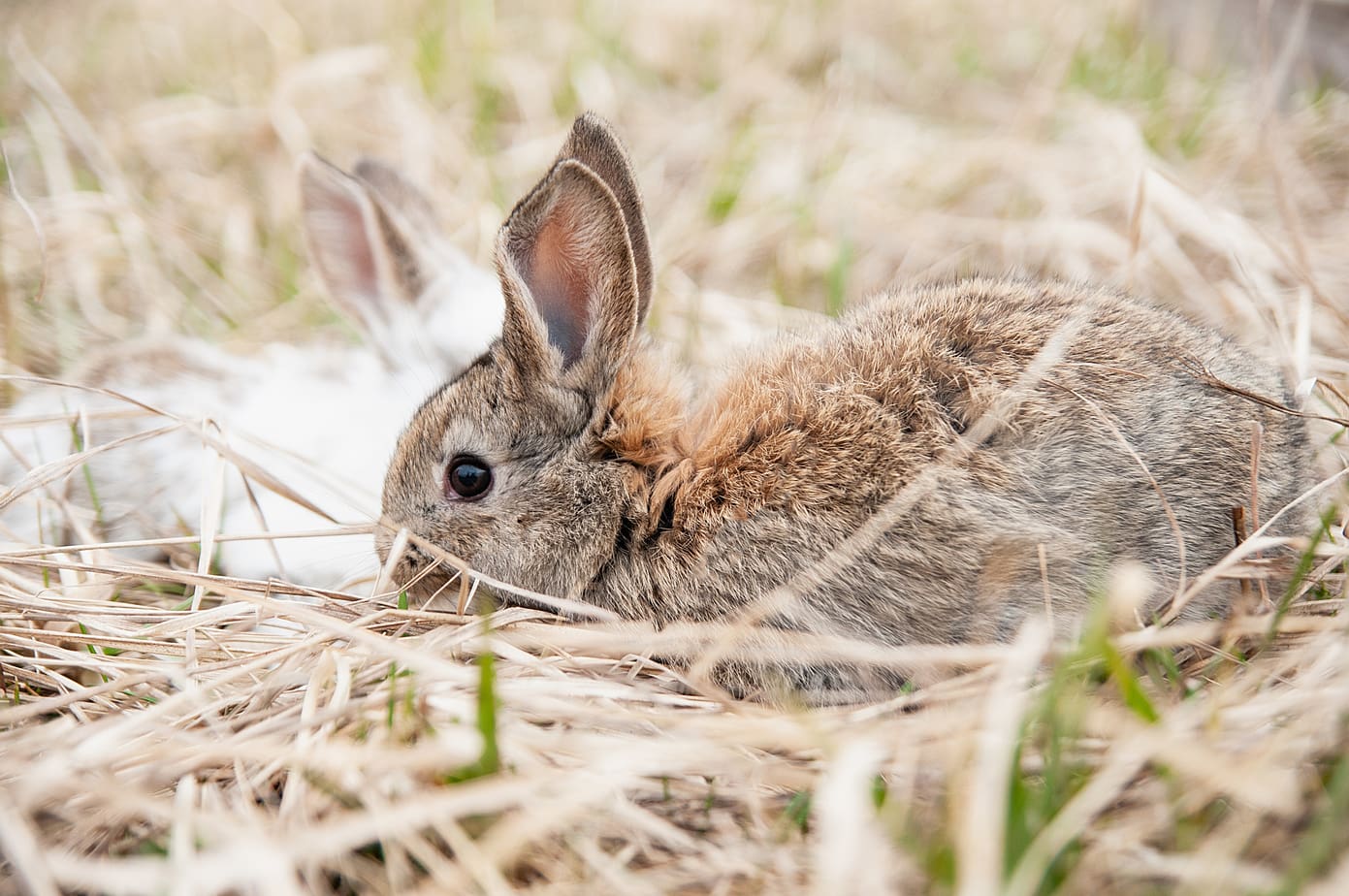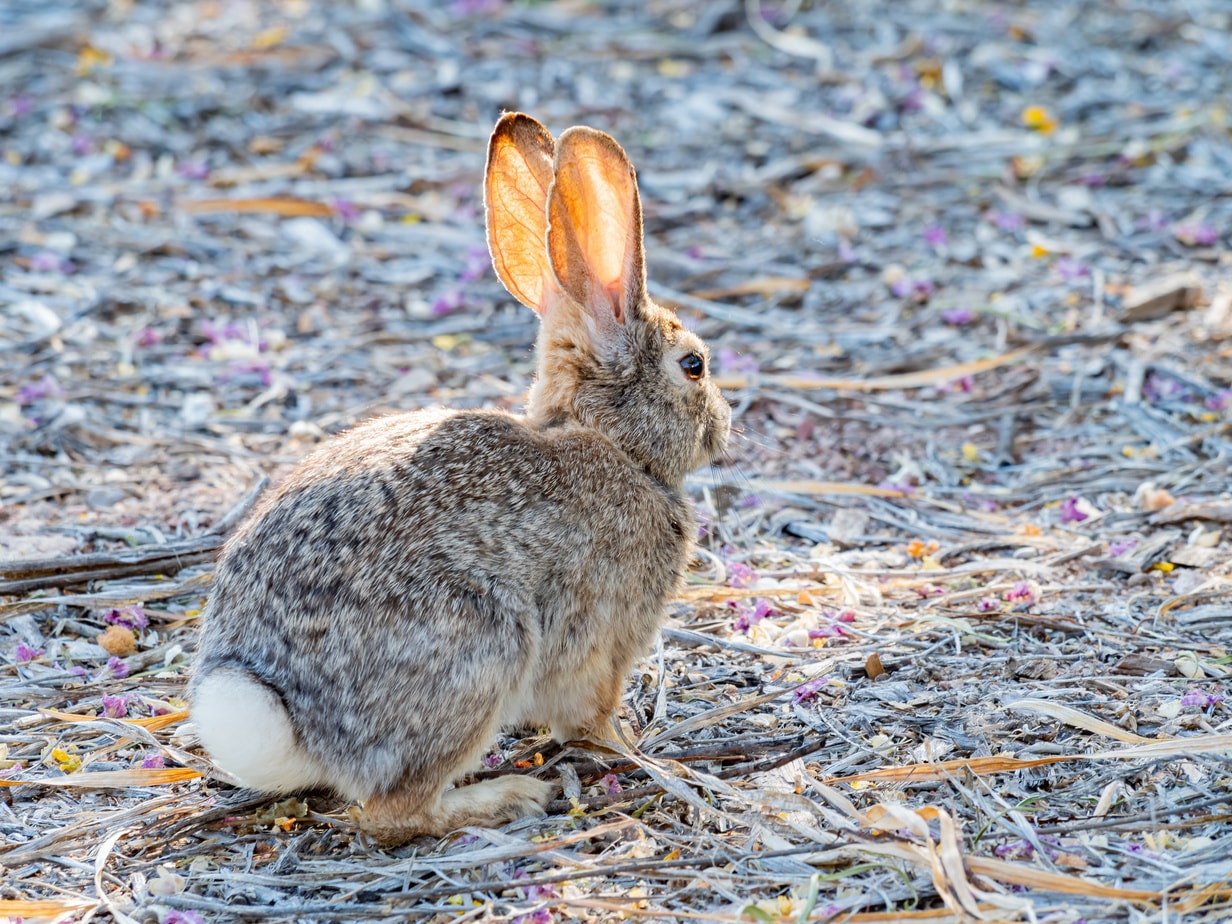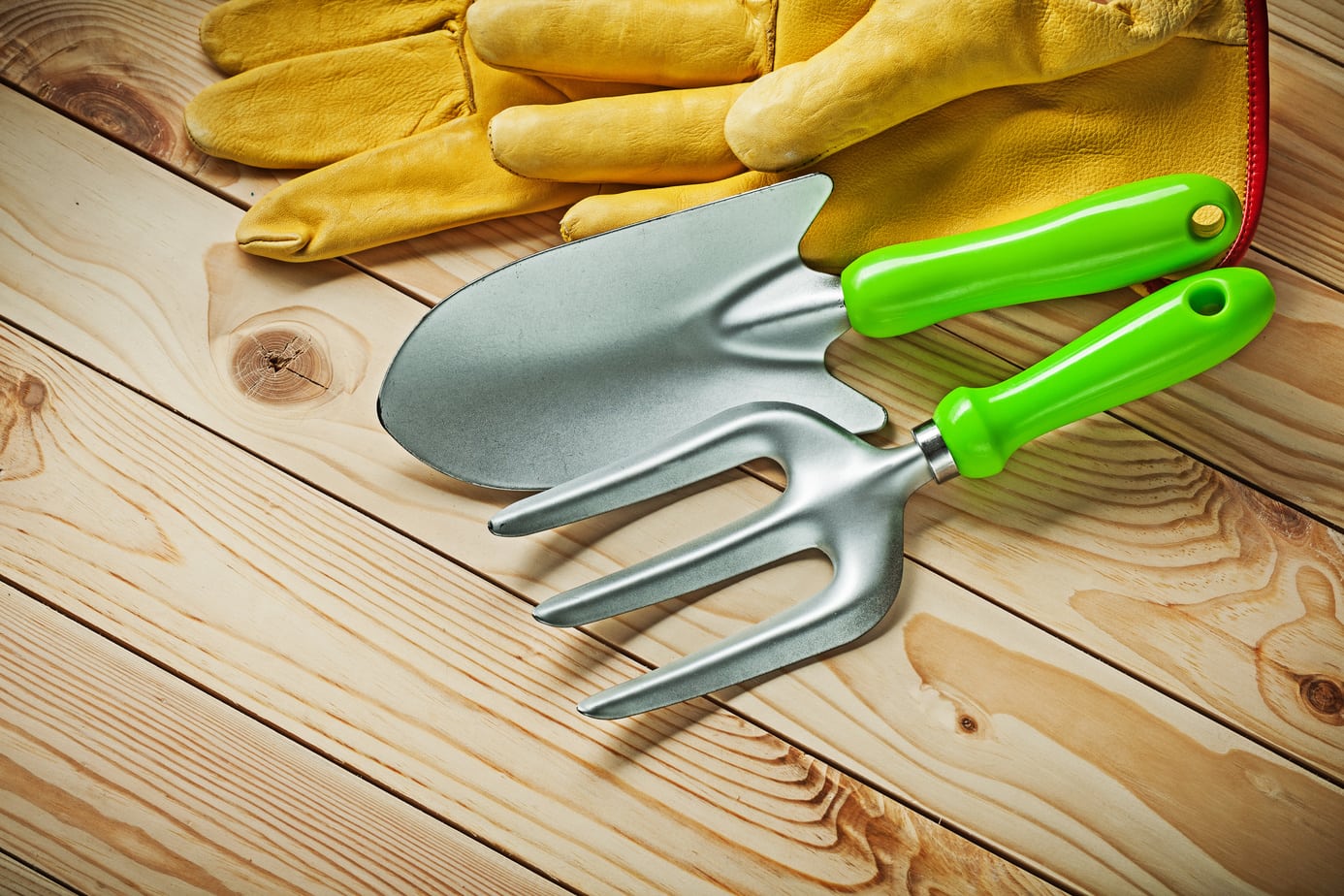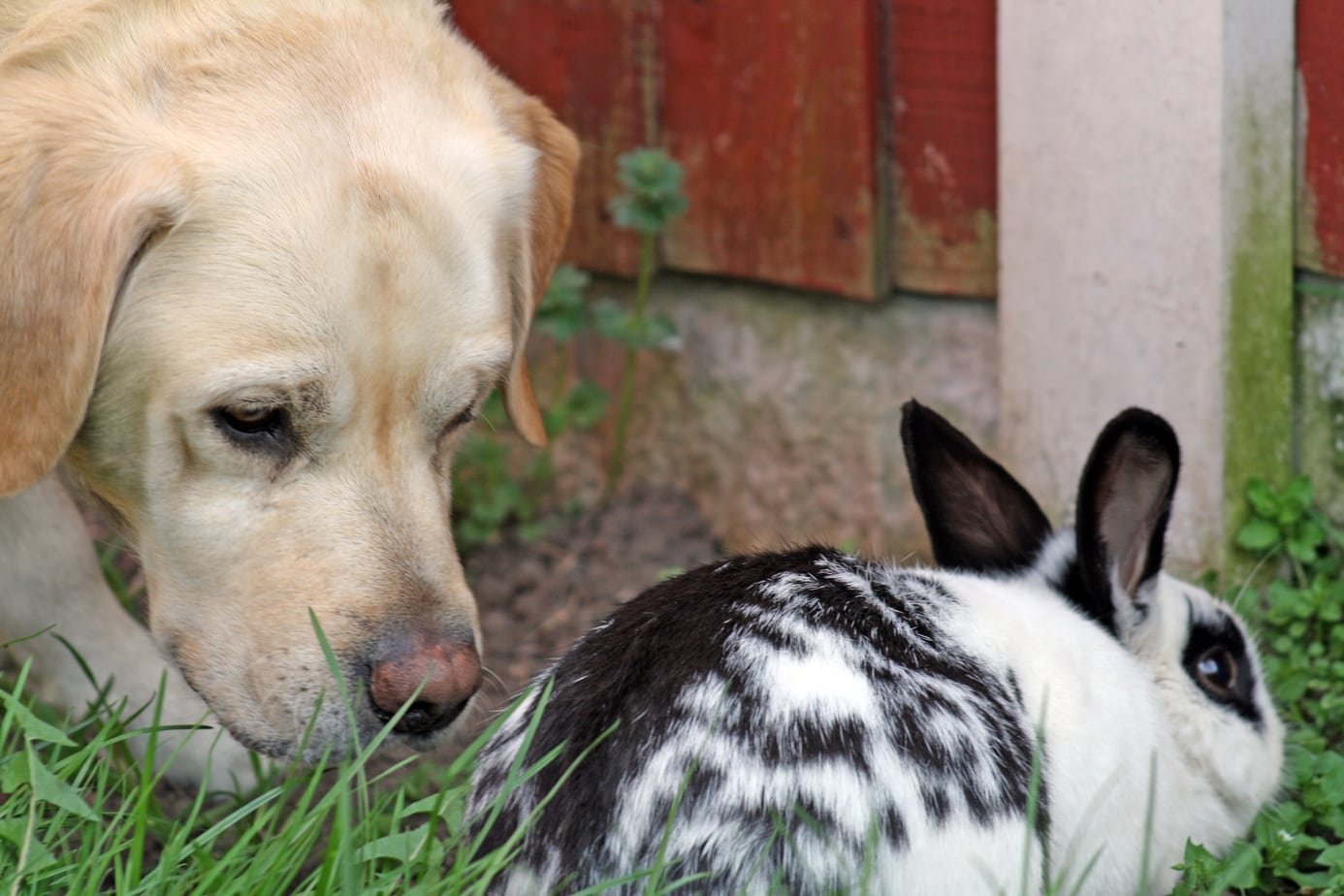
Wild rabbits dig burrows and nests to live in and have a safe place to keep out of danger. They can make these nests in many locations that seem convenient to them. But they are likely in a poor spot for your convenience.
You should not move a bunny nest from its original location. Rabbits are very territorial and don’t want to be moved. If the nest is in danger and needs to be moved, move it no more than 10 feet from the original spot. Moving a nest can cause the mother to abandon the babies.
What happens though if a nest is moved, and how will it affect the rabbits present? If you realize that you have a rabbit nest in your yard, then it is important to know how to deal with it, whether that be to move it or protect it.
Rabbit Nest vs. Rabbit Burrow
Wild rabbits are diverse and eager to have a home, but it is important to recognize what the difference is between a rabbit burrow and a rabbit nest.
For starters, a nest is specific to a mother and her babies. Nests are only used for about three weeks from the time of kindling until the rabbit kits are ready to live on their own. Whereas a burrow is a hole that is dug into the ground where wild rabbits take refuge.

A burrow is a tunnel that is dug which can lead to other burrows dug by other wild rabbits. Rabbits often live in social groups called herds and will dig burrows to live underground. A group of burrows is called a warren.
Rabbit burrows are similar to our homes having multiple doors leading to the main living room where everyone else hangs out.
Warrens often have multiple families of rabbits that are in a societal hierarchy. A family is made up of a buck, a doe, and kits. Male rabbits are called bucks and females are called does.
What a Rabbit Nest Looks Like

A rabbit nest is only used for rabbit mothers to kindle their kittens and then the nest is abandoned. This is a process specific to certain species of rabbits as most species will live in burrows with others of their kind. The most common species that use nests are cottontail rabbits.
These nests, while being used to support the bunny kits are very well hidden and may be difficult to spot. In fact, you may not even realize that there was a rabbit nest there.
These nests contain shrubs and leaves that have been mixed with the mother’s own fur to camouflage the nest from unwanted attention. The fur also acts as an insulation factor to keep the bunnies from becoming too cold. The nest itself is only a few inches dug into the ground to create a nice location for rabbits to grow.
This camouflage insulation can be anywhere from a few inches to half a foot in thickness and creates a nice barrier for the kits to grow. The nest is only used for 3 weeks until the baby bunnies are fully grown and can be on their own.
When rabbits are born, their ears and eyes are sealed shut and they have no fur to keep them warm. They need about 15-20 days to leave the nest. Also, an average nest can have anywhere from 1 to 12 kittens in it but on average will have 5.
Most nests will be close to shrubs or trees and can be very hard to see. They can also be out in a more open space of ground with little protection depending on the lay of the land. Pets and children playing in the dirt are the most likely to find these nests.
It is important to note that many cottontails do live in nest-like structures, but often these structures are just indents in a rock or the ground and create their home there.
How to Move a Bunny Nest
Rabbits can have a difficult time when it comes to moving a nest. This can create anxiety for the doe as well as for the kits and in most instances, it is probably best to just leave the nest where it is. In other cases, however, it is important to move the nest away from dangerous situations.
First off, it is good to know that the myth that touching a baby rabbit will cause the mother to abandon it is completely false. Though it will leave your scent on the rabbit, the mother will not abandon it. It is still recommended to refrain from touching the rabbits.
“Don’t hang around the nest any longer than you need to. While it’s not true that mother rabbits will reject their babies if humans or dogs leave their scent on them, you run the risk of attracting undue attention to the area.”
http://chimneyandwildlife.com/blog/kids-dog-found-nest-baby-bunnies-now/
This is due to the chance of injury that the kits may receive from being improperly handled. Too much movement in a young rabbit can create anxiety and injure them or even kill them.
Also, a disturbed nest will not cause a doe to abandon her babies. Don’t spend too much time around the nest as it may cause a strong sense of fear in the mother. Fear is one of the only causes for a rabbit to abandon a nest.
Creating a New Nest
If the nest is in a dangerous situation and needs to be moved then it is best to start by digging a new nest up to 10 feet from the first nest but don’t go farther than that. Make sure that it is about the same size as the nest that is in danger. A typical nest is 5 inches wide and 4 inches deep.
Once that is dug, carefully transfer the baby rabbits to the new nest and surround it with the same material that the other nest had. Make sure to grab the mother’s fur and use it as insulation. By using the same material, the mother will be able to find the nest and it gives her a better chance at accepting the new nest.

It is usually best to simply leave the nest where it is. The rabbits will only take three weeks to leave the area and then you won’t have to deal with damaging the nest from then on. So if you can, just wait for the rabbits to leave.
It is a serious issue if the mother abandons the new nest you’ve made. Do Baby Rabbits Really Need a Heat Lamp? and Feeding a Baby Rabbit: What, When, and How Much? will be helpful articles if you need to take matters into your own hands, but only do this if it is absolutely necessary and you are completely sure the mother is not returning to the nest. Mother rabbits, of course, will be the best caretakers of their young kittens – much better than what is humanly possible.
How to Protect a Bunny Nest Without Moving It
The question remains as to how to protect the nest while those three weeks are happening. How do you keep baby rabbits from being killed by a dog or other predators? How do you keep them safe from a playing child, or even from yard tools needed to keep a yard or garden looking healthy?
Rabbits breed from March to September and one mother can produce multiple litters in that time. Yard work will likely be taking place while rabbits are breeding and that can put a nest into danger.
Life-Saving Tip!: Keep an eye on the new nest you’ve made to make sure the mother finds her babies and accepts the new nest. Baby rabbits can survive 24-48 hours without nursing. If she doesn’t come back to feed them, read my article What to Do if Your Rabbit Isn’t Feeding Her Babies? to find out the next steps to take (this article deals with tame rabbits, but the length of time the kittens can go without eating is the same).
Not Knowing Where the Nest Is
If you have a suspicion that there is a nest in your yard but you don’t know where it is, then it is a good idea to refrain from a couple of yardwork chores.
Avoid mowing the lawn because sometimes mothers put their nests camouflaged into the grass. Also, avoid raking or moving too much through flowerbeds and gardens. Take care of what needs to be done, but just be cautious not to disrupt a nest.
Knowing Where the Nest Is
If you know where a nest is, then your job has just become significantly easier. You know exactly where the nest is and so you can keep away from it without any problem, but you can also do some things to better protect it from outside forces.
If you have any pets, make sure that they don’t know where the nest is, especially if they are outside often. If at all possible, move them inside and keep them there often, supervising them when they are outside. Keep them busy from exploring the yard and chancing on the baby rabbits.

If your pet does know where the nest is then you must keep them from getting to it. Maybe put up a gate that the mother can slip through that your animal can’t get through. That way it keeps your pet from the nest but still allows the mother access to her kits.
During heavy rainfall or even a hailstorm, the baby rabbits can be in danger of drowning or injury. An easy way to combat this is to place something over the top of the nest while the rain or hail is falling. This will protect the nest from being filled with water and will save the rabbits from death.
Conclusion
Rabbits are very specific about the location of their nests and will be picky if one is moved. Moving a nest should be avoided but can be done with particular care. A mother may not accept this movement, but hopefully, she will if you keep her material with the babies. Moving a nest should only be done in the most delicate situations and only if necessary.
